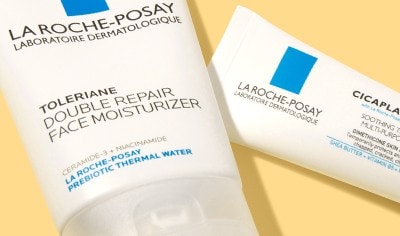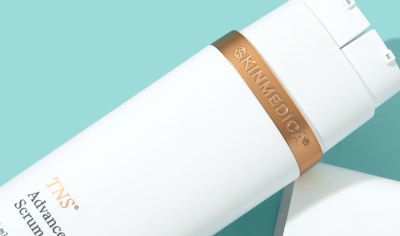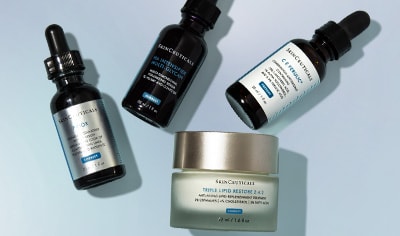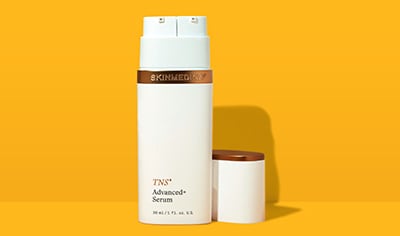
For those in pursuit of plumper lips or sculpted cheekbones, dermal fillers are an accessible, non-surgical way to refine the contours of your face in the comfort of your dermatologist’s office. However, if all the buzz about migrating filler (#migratedfiller) on social media is giving you pause, you might be wondering whether it’s something you should be concerned about.
“There is a lot of buzz about filler migration, but the truth is, it’s a risk that can be avoided by choosing an experienced injector, preferably a board-certified dermatologist,” says LovelySkin Medical Director Dr. Daniel Schlessinger, board-certified dermatologist, Mohs surgeon and cosmetic surgeon. To help make sure you’re well-informed, we’ll answer some common questions about fillers, such as:
What is filler migration?
Hyaluronic acid-based dermal fillers can be injected into the lips, chin and elsewhere on the face to help restore lost volume and reduce the appearance of fine lines and wrinkles. Any hyaluronic acid filler can be reversed, meaning that if migration does occur, it can easily be remedied in most cases. Non-dissolvable fillers are sometimes used, but there is little or nothing that can be done if there are any issues with them. When filler moves outside the area in which it was initially injected, it’s called filler migration.
“The most common cause of filler migration is poor injection technique and most likely improper placement of the filler,” Dr. Daniel Schlessinger says. “Overfilling (especially in thinner areas like the lips where it will show more), poor placement or selecting an inappropriate filler type for the area being injected are all things you risk when you visit an inexperienced injector, and these miscalculations can increase the risk of dissatisfaction or what many people refer to as filler migration.”
Dr. Joel Schlessinger adds, “If you choose an experienced, qualified injector such as a board-certified dermatologist who has a deep knowledge of facial anatomy as well as years of experience matching the right type of filler with your personal need, filler migration is unlikely to occur. What can occur, however, is filler reactivation, which happens when an infection, vaccination or procedure causes swelling at the filler areas. This is often mistaken for filler migration, but is treated somewhat differently, with antibiotics or other medications, as well as the occasional removal with hyaluronidase reversal injections.”
What are the signs of migrating filler?
If you’re noticing unwanted fullness in areas that are not where your filler was originally injected, that could be a sign of lip filler migration, under-eye filler migration or cheek filler migration. You can make an appointment with a board-certified dermatologist who can examine the area and determine whether you have a true case of migrating filler or another complication that might need to be addressed.
How can I tell if I have lip filler migration or swelling?
Some mild swelling is to be expected for a week or two after injections to the lip. “After injecting lip filler, I let my patients know some swelling and tenderness is expected for a few days after and up to two weeks if bruising occurs,” Dr. Daniel Schlessinger says.
If after two weeks you’re still noticing unwanted fullness outside the area your lip filler was injected, it’s a good idea to call your injector. “They can take a closer look and determine whether lip filler migration has occurred and check to make sure you’re healing appropriately post-injection,” Dr. Daniel Schlessinger says.
How to fix lip filler migration, under-eye filler migration or cheek filler migration
If you’re in the unfortunate situation of having visited an inexperienced injector and are unhappy with the results, there are ways to fix filler migration around the lips, under-eyes and cheeks.
One option is simply to wait it out. “Hyaluronic acid-based dermal fillers do dissolve naturally on their own over time,” Dr. Joel Schlessinger says. “This is due to hyaluronidase, a naturally occurring enzyme in your body and the same one that can be injected in such cases, that breaks down the hyaluronic acid within six to 24 months, depending on the type of filler used.”
Dr. Daniel Schlessinger adds, “For a more immediate solution, you can visit a board-certified dermatologist to talk about whether your migrated filler makes you a good candidate for an injection of synthetic hyaluronidase, which dissolves the filler at a much quicker pace. However, that also carries its own risks, as the injections can be painful and may sometimes leave you looking ‘saggy’ or thin in the areas that are dissolved.”
Are you interested in learning more about needle-free alternatives to fillers? You can learn about our favorite plumping products on the LovelySkin Blog.

About the Author
Aaron serves as Editor at LovelySkin. Since graduating from the University of Nebraska at Omaha in 2016 with degrees in Creative Writing and English, he has immersed himself in the beauty industry. When he’s not writing about the latest beauty trends, he spends time cuddling his dogs, scouring antique stores, playing tennis and hiking.
Other Posts by AaronLearn the SkinCeuticals philosophy: Prot...
Remembering SkinCeuticals founder Dr. Sh...
Follow us on social
Follow us on social networks and be one of the first to learn about sales, giveaways, and free samples






